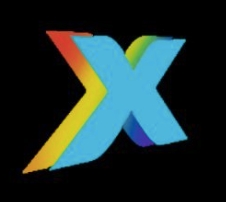The #1 Web2/Web3 Bridge for Gamers
MyxTV brings gamers closer to the next-gen games they'll love.
Incentives for the Entire Gaming Economy
Incentivizing web2: MyxTV rewards users with a token for consuming esports content, redeemable for 1. sponsor rewards within the app marketplace, or 2. status within our Discord, where it may be used to access gated opportunities (employment interviews, executive mentorship, special raffles & giveaways, etc.).
Incentivizing backers: MyxTV employs a traditional CPC model to produce revenue from advertisers. Holders who help stabilize the economy may enjoy staking rewards to gain an ever increasing ownership percentage of MyxTV over time.
Incentivizing web3: MyxTV gives smaller web3 companies priority placement to more than 3 million web2 gamers multiple times a day.
The Major Problems with Web3 Marketing to "Mainstream Gamers"
PROBLEM: Web3 Thinks Web2 is Web(3-1)
According to Dapper Labs research, web3 gaming/NFT projects must spend 60-90% of their time marketing to web3 participants to justify ongoing costs and achieve timely payback of pre-seed investors. Why is this huge spend 99% ineffective? Most web3 projects suffer from tunnel vision.
The majority of technical improvements in web3 are buidler-facing, not consumer-facing. E.g., the tech used to quickly create 10,000 generative NFTs with varying "traits" is already built into the character select screen of every respectable fighting game/FPS/RTS. The value here is not to the player, but to the developer to be able to more quickly generate characters at scale with a less sophisticated codebase than was necessary in previous gaming generations.
To the web2 gamer, the highly venerated Otherside is just a budget Fornite. Dude, it's easier to just play Fortnite.
Web2 is not web(3-1). From the mainstream player perspective, web3 looks like web(2+$1).
The Solution: Culture Trumps All
Although Yuga's Dookey Dash was ridiculed for its simplicity by mainstream gamers, Yuga claims it grew the ecosystem by 40%. How is this possible?
Culture > graphics, and if it's good enough (Dookey Dash), culture > gameplay. If players feel invested in a system, they will forego all of the stereotypical narratives that make "great games" — gRapHixXs and all. MyxTV will color its marketplace in the global collegiate culture, inviting players to form new friendships and rivalries across geographic borders. Why should state schools have all the best showdowns — what about JCSU (USA) vs. U. of Nigeria Nsukka (Nigeria)?
MyxTV has a larger goal of creating a unique global culture around proprietary IP starting in 2024.
PROBLEM: Self-Indulgent Bridges
MyxTV takes a great deal of influence from the latest generation of move-to-earn (M2E) apps with the exception of one major flaw. Stepn, Walken, and other examples of M2E could have been superior web2-web3 bridges had they chosen not to centralize their own gamification. As such, they are not really web3 bridges, but Stepn and Walken bridges that appeal mostly to web3 audiences. In a bear market, with web2 capital fleeing web3, this strategy works well for immediate justification of expenses and return of capital to investors, but risks a precipitous deflation of its economy should momentum pause for any reason.
Sweatcoin is the one popular M2E app that showcases its partner businesses rather than itself. The M2E aspect is used to generate the widest marketing funnel, which optimizes visibility to companies in the Sweatcoin rewards marketplace. Those companies, however, are 100% web2. It remains to be seen if Sweatcoin will venture into web3 partnerships as $SWEAT comes on chain. [This document shall be updated accordingly.]
Sweatcoin also ensured the stability of $SWEAT by first deploying $SWEAT as a rewards token strictly, moneyfying it only after building up substantial stablecoin reserves from ad revenues.
The Solution: Agile Iteration
MyxTV builds on the best practices of the M2E meta with an on brand pivot towards gaming.
In web3, agility = sustainability. MyxTV will closely observe its competitors, keeping to best practices and pivoting quickly to effective solutions when KPMs stagnate.
PROBLEM: Protecting Web2 Gamers from Web3 Noise
Web3 has seen the rise of Discord and Twitter as independent financial throughputs and full scope marketing hubs. It's easier than ever for a dialed-in influencer to generate massive attention for a web3 project. However, projects relying wholly on sexy web3 marketing rarely generate a sustainable community.
Regardless of how much easier web3 has made launching a project, there is still no web3 substitute for step-by-step, IRL activation to create sustainable community.
Web2 users don't yet understand the significance of a hexagonal Twitter PFP, and many are not used to a monetized Discord with crypto tip bots sending you real money for in-game achievements. They certainly don't know about Fiverr farms pumping out garbage NFT projects to take their money. Without old school marketing that holds some hands, they are like sheep to the slaughter — and that puts off web3 adoption indefinitely.
The Solution: Remove the Paywall and Provide Education
MyxTV protects web2 gamers from web3 scams by removing web3's expensive paywalls and providing educational resources to new players during onboarding, using P2P engagement as well as scaled virtual content.
Our growing IRL infrastructure of gaming computer labs at US colleges and partnerships with national student organizations serve as a hub to teach web2 gamers about web3. MyxTV allows web3 advertisers to present themselves to web2 gamers at a slower pace without boring players, removing the noise of paid shills.
Devs: Instead of glossing over your project because BAYC and Illuvium are in the way, 3 million web2 gamers will have multiple meaningful interactions with your project daily.
Last updated
